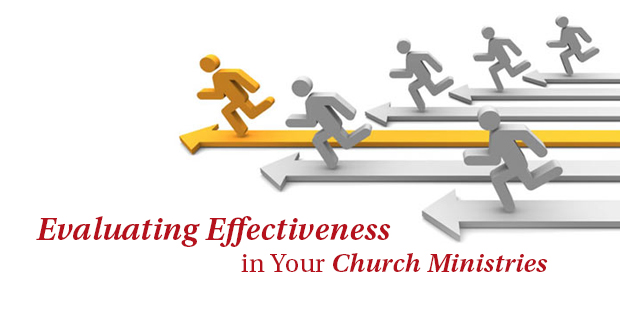
Evaluating Effectiveness in Your Church Ministries
Winston Churchill was an amazing leader, diplomat, and politician. One of the most notable parts of his legacy, however, is his collection of inspiring, and often humorous, quotations.
For example, Lady Astor, the first woman Parliament member, told him at a weekend house party, “Winston, if I were married to you I’d put poison in your coffee.” He quickly replied, “Nancy, if I were married to you I’d drink it.”
One of my favorite Churchill quotations is, “However beautiful the strategy, you should occasionally look at the results.” Ironically, he may not have said it… but, regardless, I couldn’t agree more, especially when it comes to evaluating our effectiveness in ministry.
Do we need a scorecard?
Pastors and church leaders may be able to intricately explain their discipleship strategy in sixty seconds flat, but we need more information than just a description of what it is. The best question to ask is not, “What is your strategy?” but rather, “Is your strategy working?” This leads to the question of whether or not we need to have a “scorecard” in ministry.
Do we really need to count how many people came, raised their hands, or gave? I would say, “Yes,” with the caveat that such a scorecard isn’t everything. You can be a biblically faithful church, doing everything God tells you to do, and shrink, often due to external factors such as, for example, a surrounding community in decline.
Shrinking shouldn’t be our desire, however. We want to see God’s Kingdom grow and we want to do all we can to work with Him to make that happen. A scorecard can be an effective tool in that process.
What should be on our scorecard?
If we agree with Churchill and believe we should examine the results of our strategy, the question becomes exactly what will measure to determine our ministry effectiveness. Answering that question is perhaps the biggest challenge of all.
I think there is a two-fold answer to this question. There are certain data that are quantitative and easy to assess each week. These would include areas like conversions, attendance, baptisms, etc. They can be compiled on a dashboard of sorts, and can give a pastor a quick snapshot of overall church health. While these obviously matter in assessing the overall picture of a church, they are not the only things that matter.
In addition to this quick dashboard, we should also be measuring growth in areas like discipleship, missional living, and participating in a small community.
Having a lot of converts is great, but are they changed? Are they living as new believers, serving within and outside the church, and sharing with others about Christ? If not, then ultimately, we’re not completing the task. That’s why these more in-depth areas need to be on the scorecard as well.
How do we measure the subjective areas?
But if we want to evaluate these types of issues, how can we do that accurately? In the churches where I’ve been involved, we use a spiritual formation assessment tool. We have used such tools for “dashboard categories” (e.g., small group involvement, attendance, giving), this measures issues in much bigger categories (e.g., community involvement, serving within the church, personal devotions). Because it’s a regular measurement, each individual can quickly go in and see how he or she is doing compared to last year, and it can also roll up congregationally so that we can have an eye on the progress we’re making in every area of our church’s life.
The data is both self-reported, as be presented by various church leaders. For example, our small groups are encouraged to participate in a corporate mission project once a month. We ask our leaders to regularly communicate to us to let us know what’s going on with their ongoing ministry and mission. In this way, if we assess our congregation’s community involvement, for example, at 50 percent, we set a goal of 60 percent for the next year, and we actually have a way of tracking and assessing that goal.
There are several different tools you can use to lead your church through this type of assessment. At LifeWay Research, we have developed the Transformation Church Assessment Tool, which helps churches analyze how well they are doing in seven factors that research indicated were part of healthy churches. We also have the Transformational Discipleship Assessment, based on extensive research that discovered eight attributes that consistently show up in the life of maturing believers.
At the end of the day, a scorecard is just that. It’s a simple tool to help us best live out the mission that has been entrusted to us. Regardless of the results that are presented, we need to remember another Churchill quote, “Never give in. Never give in. Never, never, never, never—in nothing great or small, large or petty—never give in . . .”
Our mission is too great to settle for anything less.

Tags: Ed Stetzer, Measurement, effectiveness, scorecard















